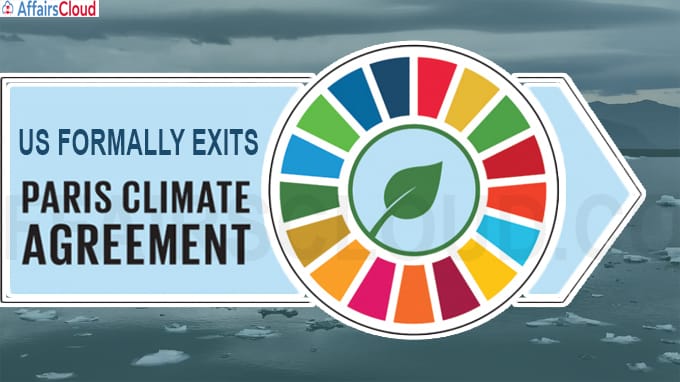 On November 4, 2020 the United States (US) became the first country to formally exit the Paris Climate Agreement. The formal exit from the agreement happened over a period of three years, after President Donald Trump declared pull-out from the climate accord in June 2017.
On November 4, 2020 the United States (US) became the first country to formally exit the Paris Climate Agreement. The formal exit from the agreement happened over a period of three years, after President Donald Trump declared pull-out from the climate accord in June 2017.
Impact of US Exit:
i.US is the second largest emitter of Greenhouse gases in the world (1st – China), accounting for a total of 25 percent of global greenhouse gas emissions.
ii.US had promised to reduce its emissions by 26 percent to 28 percent by the year 2025 from 2005 levels.
Reasons for withdrawal:
i.Under the Paris pact, developed countries are under obligation to mobilize at least $100 billion every year from the year 2020 in climate finance meant for the developing world. The amount was set to be revised upwards after five years.
ii.US President, Donald Trump was opposed to this move and called it “unfair” and hence the withdrawal.
Paris Climate Agreement:
i.In December 2015, 195 Countries adopted the Paris Climate Agreement to combat global warming and actions to intensify actions for low carbon growth at the 21st Conference of the Parties of the UNFCCC in Paris, France.
ii.It is an agreement within the United Nations Framework Convention on Climate Change (UNFCCC) and is effective since November, 2016.
Objective of Paris Pact:
i.The key objective of the pact is to keep global temperature rise in the century to below 2 degrees Celsius, and to limit temperature increase to 1.5 degree Celsius.
ii.The agreement came into force on November 4, 2016 and 189 countries adopted it.
India’s Target under Paris Climate Agreement:
i.India is the Third Largest Emitter of Greenhouse gases.
ii.It agreed to reduce emissions intensity of Gross Domestic Product (GDP) by 33% – 35% by 2030 below 2005 levels.
iii.To increase the share of non-fossil based energy resources to 40% of installed electric power capacity by 2030.
iv.To create an additional (cumulative) carbon sink of 2.5-3 “GtCO2e” (Gigatonnes of equivalent carbon dioxide) through additional forest and tree cover by 2030.
About United Nations Framework Convention on Climate Change (UNFCCC):
Executive Secretary – Patricia Espinosa
Headquarters – Bonn, Germany




